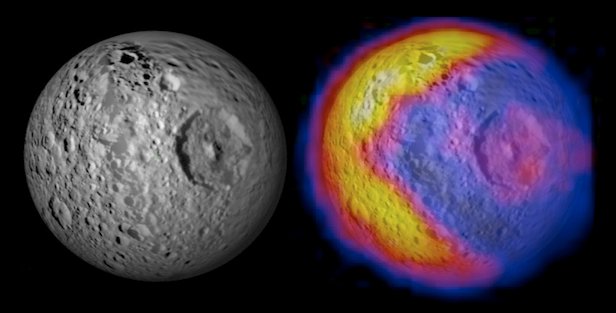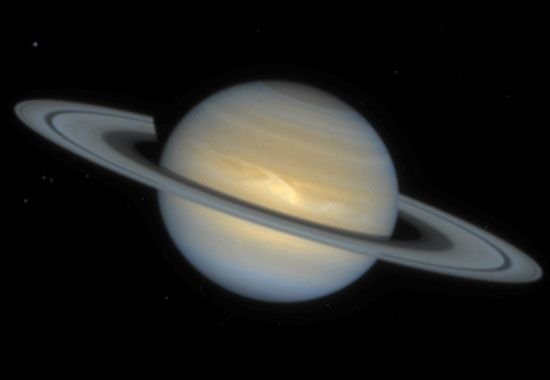Now lets talk about one another intriguing body in our solar system.
Mimas (pronounced MY muss or MEE muss, adjective Mimantean) is the most reflective object in the solar system.
Mimas is a moon of Saturn and it is notable for being the most reflective object in the solar system.
Its surface is made up of water ice with a layer of dark material, which may be organic compounds from meteors that have crashed into its surface over time.
It has one side that faces Saturn and one side that faces away from Saturn, and this difference in temperature causes Mimas to wobble like a top around its axis once every eight hours and 20 minutes.
How was Mimas discovered?
Mimas was discovered by William Herschel in 1789.
William Herschel was an English astronomer who discovered Mimas. He used a telescope to observe the night sky and found Mimas on September 11th, 1789. He was observing Saturn and noticed that one of the moons had a different orbit than the other moons.
However, some other accounts state that Mimas was discovered by James Christy on October 10, 1980 from images taken by NASA’s Voyager 1 spacecraft. It was given its name because it resembles a baker’s mime figure.
Physical Features Of Mimas
Originally thought to be a comet, Mimas has an irregular shape and is heavily cratered on its surface. It also has a large crater at its north pole, which makes it look like the Death Star from Star Wars. The crater is 130 kilometers (80 miles) wide and 12 kilometers (7 miles) deep, which means that there are more than 1 billion cubic meters (240 million cubic feet) of ice inside it!
Location of Mimas in the solar system
Mimas is a moon of Saturn and it orbits around the planet in a nearly circular orbit. Mimas is the smallest and most distant of the major moons and has an orbital radius of about 181,000 km.
The location of Mimas in our solar system is in the outer part of the solar system, which makes it difficult to see from Earth. It takes Mimas almost two days to orbit Saturn.



The moon does have that deathstar look 😀